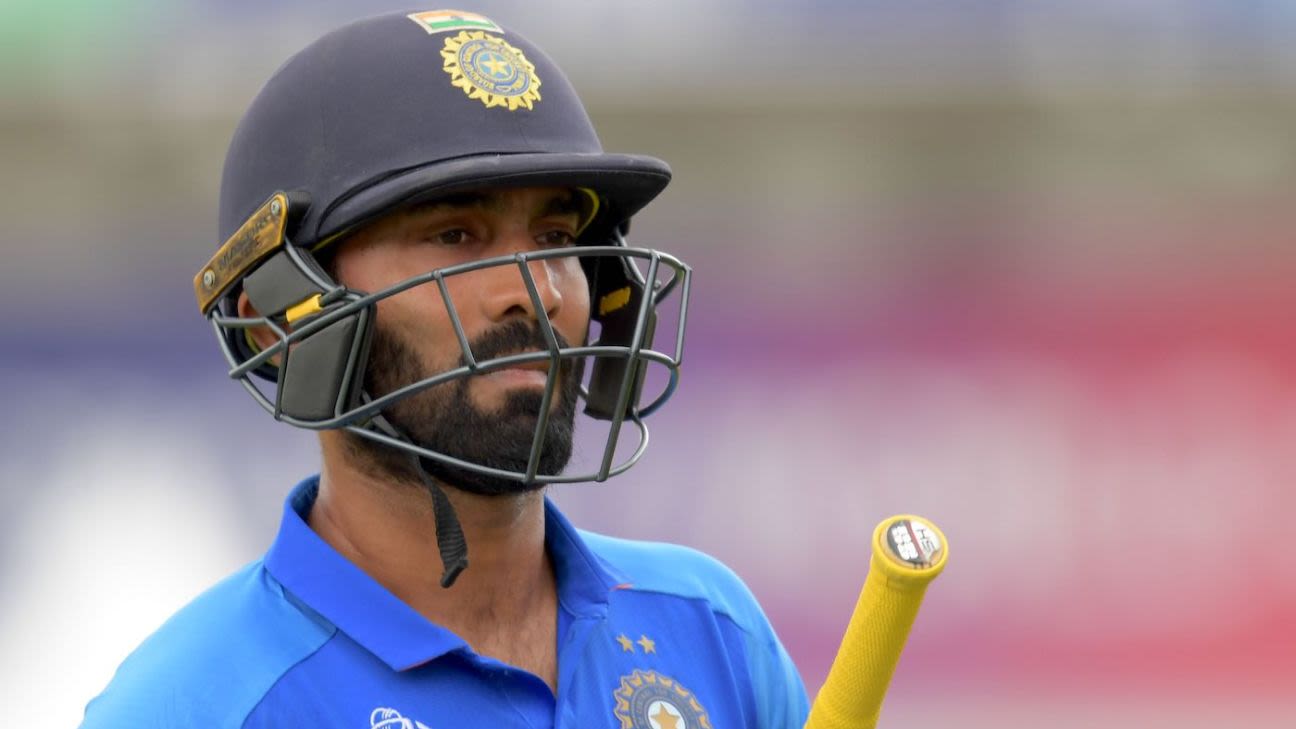Cheteshwar Pujara is back in the Test squad, and he pretty much forced that decision on the selectors with his rollicking form in the County Championship. How do you ignore 6, 201*, 109, 12, 203, 16, 170* and 3? The selectors possibly factored another reason into his recall as well: in the first four Tests of the series that will end in Edgbaston, he was arguably India’s best-performing middle-order batter, his series average of 32.42 masking the vital contributions he made. His third-innings knocks of 45 (off 206 balls) and 61 helped India claw their way back to victory after conceding first-innings leads at Lord’s and The Oval respectively, and he top-scored for India with 91 in their defeat at Headingley.
A lack of match practice, however, could be a more immediate reason behind Ishant’s non-selection; he hasn’t played any competitive cricket since a pair of Ranji Trophy games in February-March, and those were his only matches since India’s home Test series against New Zealand in November 2021. But with India’s pace reserves constantly growing, you wonder where Ishant will get his next opportunity to turn heads and demand a recall.
Over the last three IPL seasons, Prithvi Shaw has managed a strike rate of 152.84 in the powerplay. In the middle overs, meanwhile, Sanju Samson has achieved strike rates of over 150 against both pace and spin. No other India contender comes close to matching those records.
Kishan (strike rate of 120.11) has been far from at his fluent best during IPL 2022, while Venkatesh Iyer (average of 16.54, strike rate of 107.69) has had a horror season. But both have kept their places in the T20I squad, suggesting that the selectors are backing the players they have identified as long-term prospects, and that IPL form is neither a guarantee of selection nor a deal-breaker.
It helps, too, that both are left-handers who can bat in multiple positions, and that one offers a wicketkeeping option and the other a sixth bowling option.
IPL 2022 has been a goldmine for India’s selectors in terms of the sheer number of uncapped fast bowlers who have made an impact with their pace, skill, and execution under pressure. Out of that group – which also includes the likes of Mohsin Khan and Mukesh Choudhary – two have earned first-time call-ups to the T20I squad.
Hardik Pandya was always going to be back in India’s white-ball plans the moment he resumed bowling. And he hasn’t just resumed bowling; his speeds have often veered past 140kph, he’s used hard lengths and changes of pace most cleverly, and he sent down his full quota of overs in his first four matches of IPL 2022. A groin issue has reduced his bowling output since then, but India don’t necessarily need him to bowl four overs every game. If he can bowl two while striking the ball at even 80% of his potential, he would walk into most T20 line-ups in the world.
If he can grab the chances he gets during the series against South Africa, however, Karthik could still make a major case to be picked as India’s reserve keeper for the T20 World Cup.
